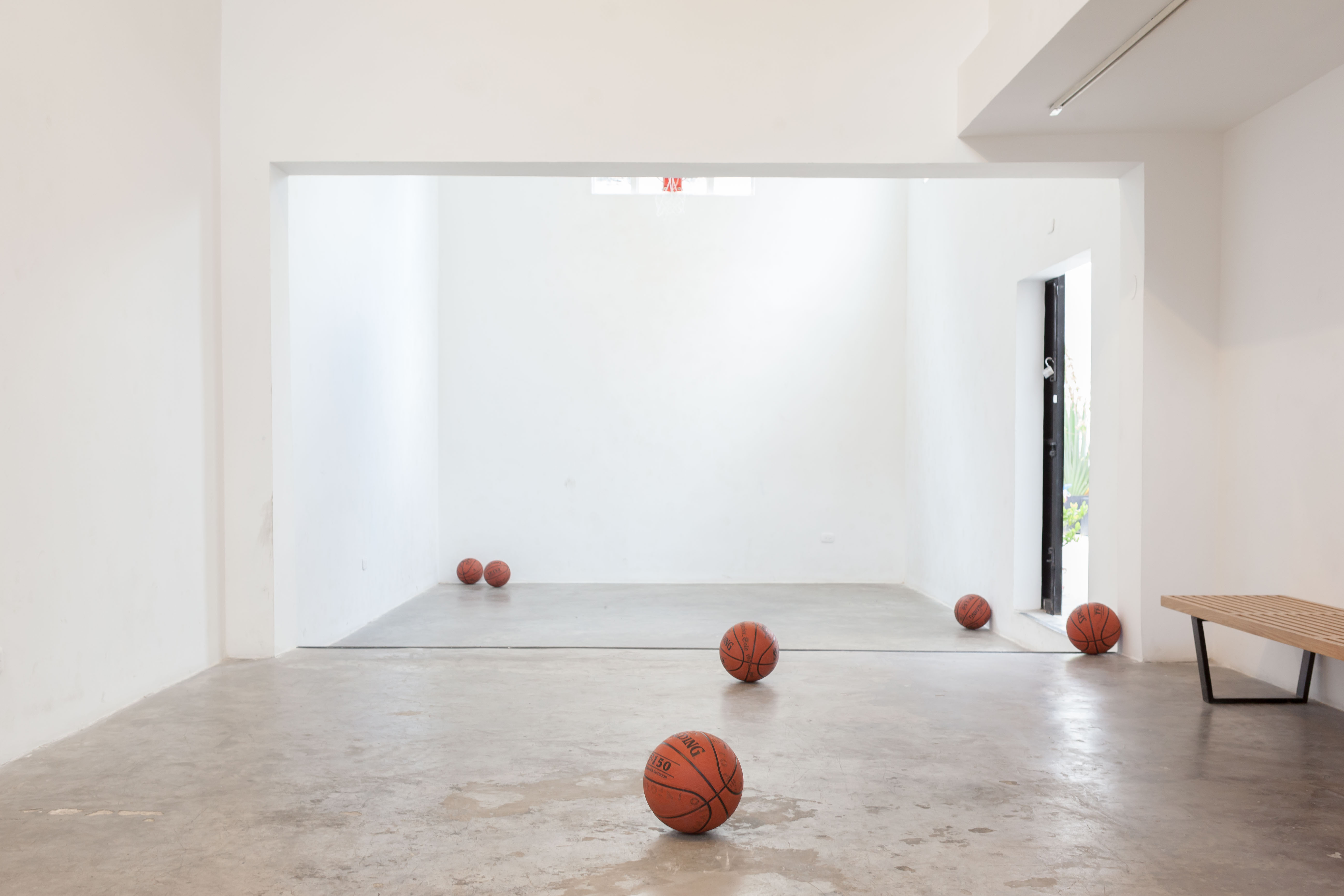Spaces or urban infrastructures are usually thought of as a collection of static volumes and objects that do not act. This is especially true for art spaces that supposedly function as anonymous places that offer only a background structure that disappears in the light of the works it hosts. In spite of the efforts to neutralize the differential characteristics of these spaces to guarantee the “adequate” visibility (and sale) of the works, their organization is active. There, grammars, codes and distribution logics are articulated that, far from being neutral, imply dispositions that exert a power and determine a behavior.
These spaces are in themselves media or technologies that carry information, and that presuppose specific gestures and relationships between the bodies articulated therein. Pinyol refuses to maintain the idea of that supposed neutrality of the gallery that seeks to “disappear” to fulfill its function. Instead of occupying the space with objects, ready for sale, they carry out operations that emphasize that this space is not empty of meaning, and that from its volumes and distribution, information that has to do with its history can be made visible, on the one hand; and with its dynamics of power, institutionality and visibility on the other.
Pinyol intervenes minimally the space and, rather, activates it through game and the event, as a way to show the ways in which space hides its forms of power, in the same way that technology tries to become invisible inside of everyday life to be more effective. In the case of technology, its invisibility also generates the illusion of neutrality, which makes it easy to believe that its codes, algorithms and processes are not mediated and impartial. As if they were not connected with human and non-human bodies, and ecological, political and economic systems.
Through the exercise of emptying the space to transform it into a basketball court, and of inserting balls that are tattooed with theories and norms occupy the place of the body, those power relations that are established between the interface (the screen or the space) and bodies becomes more evident. The body that plays in space, which adapts to its conditions and rules, which is limited by borders and borders, as well as by the rules of sport itself, which is molded and transformed to accommodate technology and generate efficient choreography and productive between human and machine.
But, perhaps, by proposing this space as a place of visibility, play and encounter, and not as a space that focuses on the object and its fetishization, a crack is also opening for technology to fail, for subversion to appear and the indiscipline; and new corporalities, choreographies, and forms of contact are generated that confront the naturalization processes of the norms and instrumentalization of the bodies.
Throughout the exhibition there was a series of actions in which this basketball court was activated through games, classes and discussions.
Alejandra Sarria













